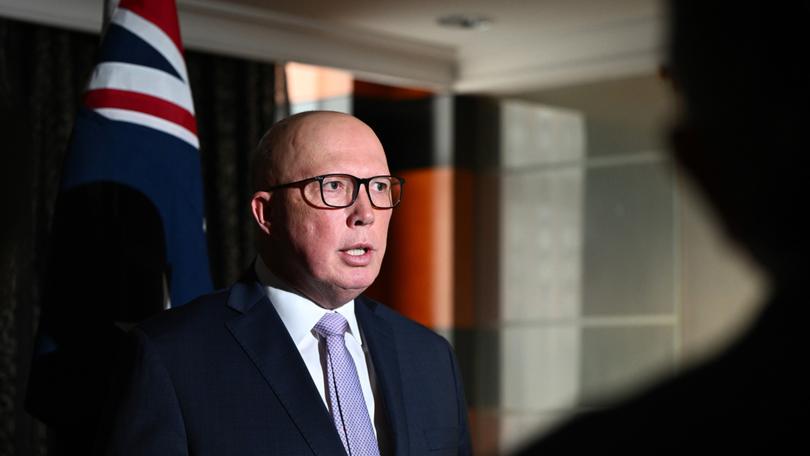Coalition set to announce long-awaited nuclear details

Opposition Leader Peter Dutton is poised to announce his nuclear energy policy, including multiple proposed sites for power plants.
The Liberal leader plans to reveal the location of up to three sites for nuclear energy plants should the coalition win the next federal election, according to media reports.
Mr Dutton is set to hold a press conference on Wednesday alongside Nationals leader David Littleproud and deputy Liberal leader Sussan Ley.
Sign up to The Nightly's newsletters.
Get the first look at the digital newspaper, curated daily stories and breaking headlines delivered to your inbox.
By continuing you agree to our Terms and Privacy Policy.His party’s MPs are expected to be briefed on the plans that morning.
It is rumoured that Queensland, South Australia, New South Wales and Victoria are all being considered for the locations of the three sites.
Speculation of the areas include Gladstone, Callide, Stanwell, Tarong, Port Augusta, Collie Mt Piper, Hunter Valley and the Latrobe Valley.
Mr Dutton has said he will oppose Australia’s legally binding 2030 climate target, a 43 per cent emissions reduction on 2005 levels, if he is elected.
The coalition remains committed to reaching net-zero emissions by 2050, senior party members have said.
A report by the CSIRO found nuclear power plants wouldn’t be built at the earliest until 2040.
The latest report on the technology’s feasibility has found nuclear power is a “dangerous distraction” to Australia’s renewable energy transition because it would take too long and cost too much to build.
Even if nuclear restrictions were lifted tomorrow, it would still be at least 20 years before a reactor could be operational, the paper released by the Australian Conservation Foundation says.
By that time, all or nearly all Australia’s remaining coal-fired power plants will be closed, meaning carbon emissions-intensive fossil fuels will likely have to be prolonged.
Even ignoring the lead time required to establish a nuclear industry, it would be unable to compete financially with renewables and require taxpayer subsidies worth tens or hundreds of billions of dollars.
Another hurdle is convincing Australians nuclear poses no safety risk.
Major insurers, including AAMI, Allianz and NRMA, specifically exclude coverage to homes, cars or possessions from nuclear accidents.
“Proposals to introduce nuclear power to Australia make no sense,” concludes the report, which was led by anti-nuclear campaigner Jim Green and released on Wednesday.
The paper was written in response to a federal coalition plan to replace coal-fired power stations with nuclear, rather than relying on increased investment in renewable energy and storage to reach net zero.
Mr Dutton argues baseload nuclear is necessary to achieve the energy transition without sacrificing affordability or reliability.
“I want to make sure that we’ve got renewables in the system,” he told reporters on Tuesday.
“I’m happy for batteries, but we can’t pretend that batteries can provide the storage.
“We need to make sure that as we decarbonise and as the economy transitions, that we do it in a sensible way.”
The latest edition of the benchmark GenCost report, released by the CSIRO and Australian Energy Market Operator in May, found the cost of building a large-scale nuclear power plant would be at least $8.5 billion.
